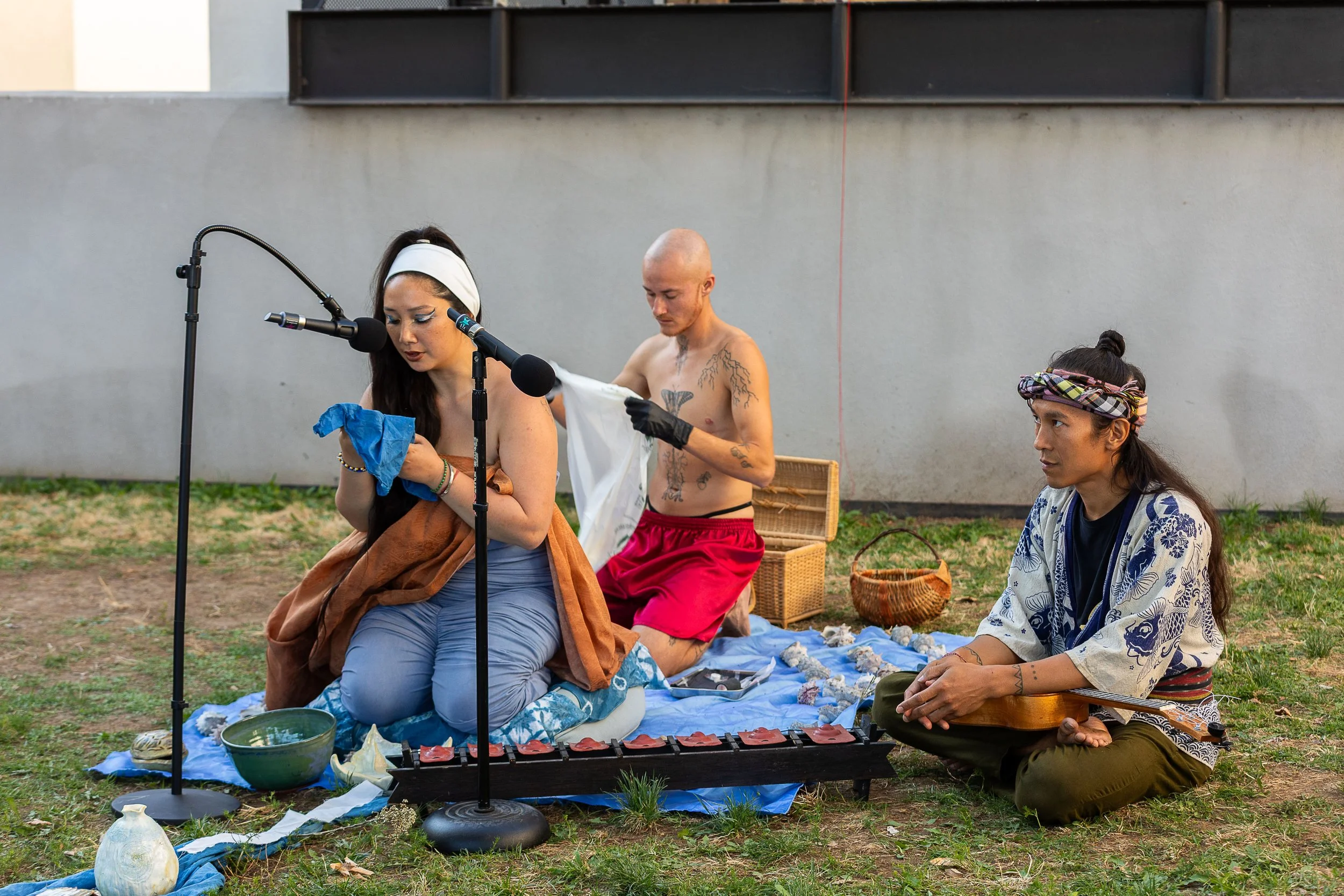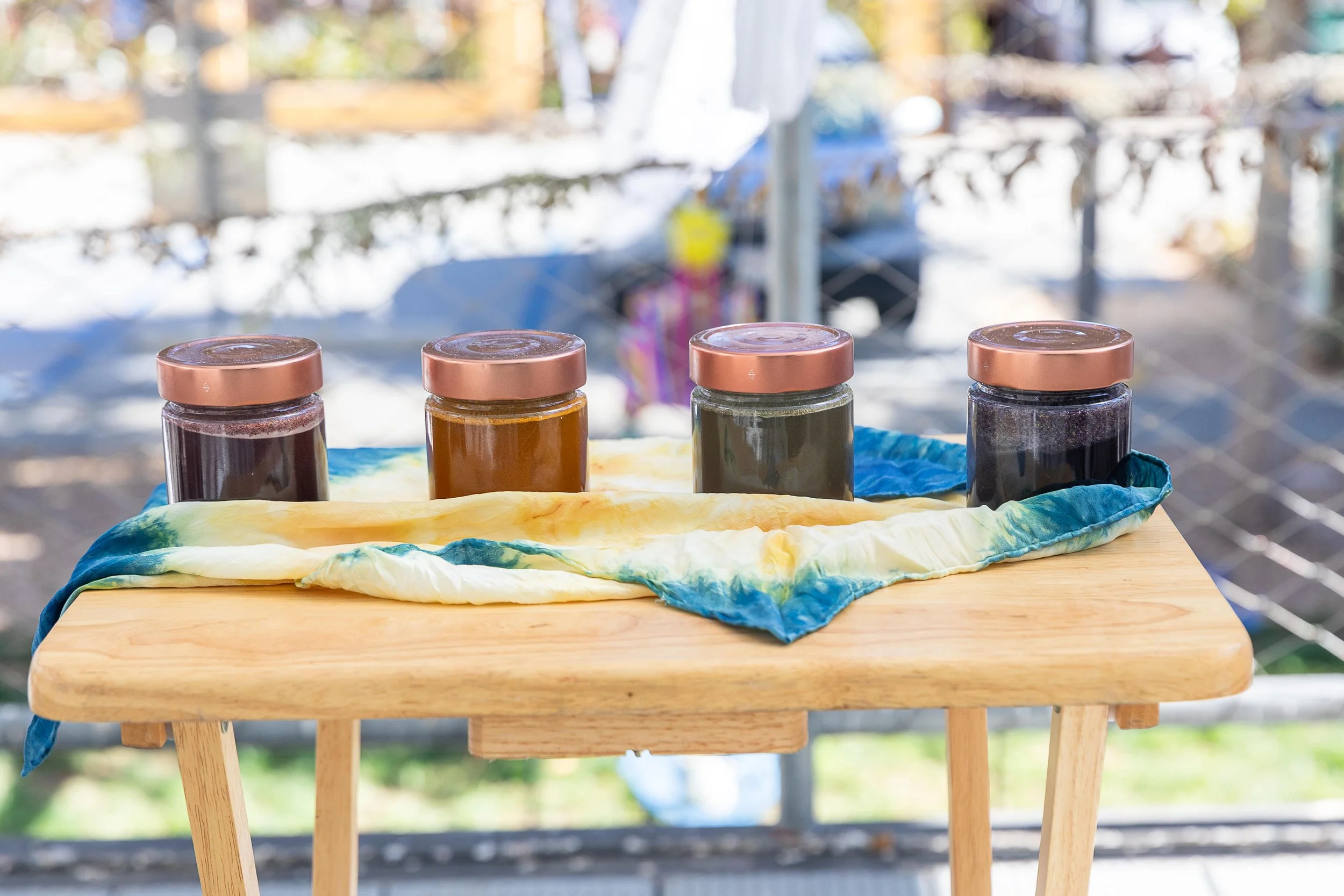SEH-REUM
■ CYCLE 1 fellow
For the land we carry, seh-reum will be sharing a new iteration of their ongoing body of work, feed that which dreams us, seed that which frees us, titled: Ieodo Sana (pronounced ee-oh-doh sa-na)
feed that which dreams us, seed that which frees us is a personal and collective prayer. A living altar, ritual performance installation, grief ceremony, mutual aid market and mobile apothecary, weaving our spiritual and political solidarities, reclaiming and re-membering our ancestral practices and stories to show up in solidarity and kinship with one another. We ask: what are we creating & building in the midst of systemic collapse that will sustain us beyond it? What is returning? What are we preparing for?
Ieodo Sana, this work’s title, is also the name of a traditional diving song from our Jeju Island haenyeo (our womxn/femme abalone and conch divers) about Ieodo Island, a mythical island beyond the sea where the spirits of those who go through adversities in their present life and those who live at sea such as fisherman and sailors, will have a paradisiacal afterlife. It is also the name given in 2001 to an underwater submerged reef site also called ‘Socotra Rock’ by some internationally, referred to as an ‘exclusive economic zone’ (EEZ). It has been a space of overlapping territorial dispute, military and resource exploitation between several nation-states since the early 1900s.
Some of the song lyrics translate to:
“Ieodo sana, ieodo sana, ieodo sana
Where to go, where to row
All aboard to the depths of the sea
Where my mother gave birth to me
Did she know to dive would be my destiny?”
“Ieodo sana, ieodo sana
Past this island, are there pearls awaiting? Past this island, are there gems for me?
Where is the man that I’ve wed? Is he alive or dead?
From him, I haven’t heard a single word.” (translation by Kang Kyung-ja)
This altar installation and grief ceremony is in dedication and in honor not just of all the people we are losing personally and collectively in this time of genocidal and ecocidal violence globally, but also specifically in honor of our aquatic and oceanic relatives that are on the frontline of climate disaster and extraction in our waterways, who many of us carry specific ancestral responsibilities to and relate to as our living ancestors. These same beings and waters that connect us to these lands where we grew up here in California. Especially in this time where our undocumented family are being targeted and kidnapped by the state, we make these offerings asking for the support and guidance of our ancestors who have survived countless atrocities, praying for protection, deepened webs of care and solidarity, and to equip us with the skills we need to exist in this time. We lift up the spirits of those we love and have lost, in their journey home to the stars, this altar and offering is especially in dedication to some of my beloved recent dead who will be named during the ritual.
This installation is an honoring of Ieodo as an underwater and celestial garden, as a burial ground, and a portal of connection, a place we dive deeply to and take flight. Each of the altar pieces are born out of my own journey of remembrance and conversations with my ancestors, expressions of my mental and spiritual healing process in this time where our hearts are being stretched to the edges of our capacity and our ancestors are calling us forward. From weaving, dyeing, paper-cutting, song, poetry and sculpture, and with the support and collaboration of my fellowship cohort members and dear friend Jonathan Nobleza, we share this ritual as an offering from our hearts to these lands and waters that give us life, praying that it feed the ongoing work and prayers for continued rematriation, Indigenous womxn, femme & Two-Spirit leadership and sovereignty of our Kumeyaay kin, and the abolition of all borders and genocidal nation-states, from every river to every sea.





SEH-REUM
■ an interview with the artist:
seh-reum tom (they/them, we/us) is a nonbinary, genderfluid child of the water, dolphins, bees and stars. a multidisciplinary practitioner of healing, performance, aquatic, visual, eco-erotic, sonic, martial and ritual arts, a birthworker, care worker, facilitator, community organizer, land defender, bodyworker, energy and sound medicine practitioner, folk/energetic/mutual aid herbalist, essence practitioner, NADA (ear acupuncture) practitioner and is ever-growing and deepening in their study and training as a deathworker, crisis worker, street medic, farmer, beekeeper, ancestral freediver, aquatic dancer & bodyworker, trauma-informed surf therapy facilitator.
Their maternal lineages are from Jeju Island and paternal lineages are settlers in California from Southern Coastal China (Pearl River Delta). they honor and acknowledge their Japanese and Mongolian ancestors through complex histories of colonization, migration and imperialism and give deep reverence and thanks to the Ohlone, Lenape, Tongva and Chumash lands and waters where they were born and that have raised, shaped and given them life.
They are a member and performer in the Connect/Reflect/Enact (CRE) program, a multi-part project integrating body knowledge and art creation to hold space for deep reflection of wounds both suffered and inflicted through systemic oppression with the guidance of Dohee Lee. we create individual and collective community healing ritual processes and ceremonial performances, reconnecting and relearning our ancestral lands and cultures while being good guests and relatives on the lands we are living on through healing and decolonizing the Body as the Land through Art practice, connecting social, political, environmental, climate and land issues and stories through creative art processes.
They are also a cross-pollinator of The Callegory, an arts activism and narrative organizing project nurturing coalition-based power and embodied storytelling to spur sustained, collective action that uplifts systems-directed solutions, interrupts inadequate action, and nourishes both the frontline landscape of California and global solidarity for the international community. they co-steward the Land Defender Care Crib, a crew of land defenders offering care to other land defenders, birthed out of work on the frontlines of land defense and water protection in our communities and at the global climate conferences such as the United Nations Framework Convention on Climate Change (UNFCCC) and the Convention on Biological Diversity (CBD). in 2015 they co-founded BUFU (By Us For Us), a collaborative living archive and project-based collective centered around Solidarity amongst Us (Black & API communities & diasporas), through co-created experimental models of organizing & making (collaborative programming, visual archives, community partnerships and resource redistribution).
SEH-REUM
*
SEH-REUM *
seh-reum's artistic practice emerges at the crossroads and liminal spaces of ancestral healing, mental and spiritual health, water, and responding to the polycrises of our time. Shaped by the profound symbolism and regenerative qualities of water, their work seeks to catalyze transformative experiences that bridge the personal, ancestral, and ecological realms through ritual, sculpture, weaving, textile, natural dyes and plant pigments, embodied movement storytelling, song, film, photography, printmaking, poetry and creating immersive installation environments and altars. Water, as a universal force, holds the memories of our ancestors and mirrors the inner landscapes of our subconscious and emotions. Through their creative process, they tap into this interconnectedness, drawing upon the wisdom and visions of our ancestral lineages to address the challenges we face today, weaving together threads of identity, remembrance, belonging, and resilience. The spaces they create are meant to further share healing offerings and strengthen networks of care. Opening up portals of possibility and reflection, asking what it will take for us to experience liberation in our lifetime and for future generations. To generate not just awareness of what we are facing collectively, but strategies and skills for how we build our collective capacity to navigate crises with and for our communities.







